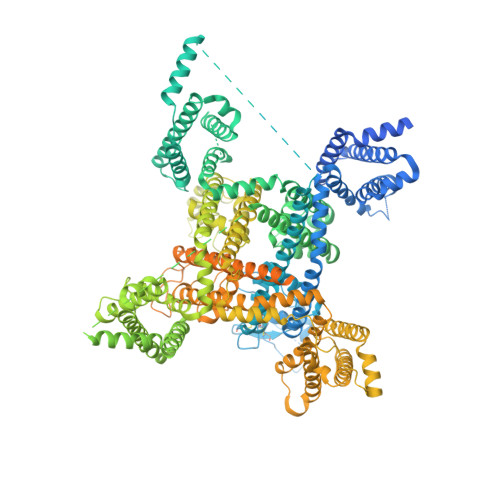Structure of the Cardiac Sodium Channel.
Jiang, D., Shi, H., Tonggu, L., Gamal El-Din, T.M., Lenaeus, M.J., Zhao, Y., Yoshioka, C., Zheng, N., Catterall, W.A.(2020) Cell 180: 122-134.e10
- PubMed: 31866066
- DOI: https://doi.org/10.1016/j.cell.2019.11.041
- Primary Citation of Related Structures:
6UZ0, 6UZ3 - PubMed Abstract:
Voltage-gated sodium channel Na v 1.5 generates cardiac action potentials and initiates the heartbeat. Here, we report structures of Na V 1.5 at 3.2-3.5 Å resolution. Na V 1.5 is distinguished from other sodium channels by a unique glycosyl moiety and loss of disulfide-bonding capability at the Na V β subunit-interaction sites. The antiarrhythmic drug flecainide specifically targets the central cavity of the pore. The voltage sensors are partially activated, and the fast-inactivation gate is partially closed. Activation of the voltage sensor of Domain III allows binding of the isoleucine-phenylalanine-methionine (IFM) motif to the inactivation-gate receptor. Asp and Ala, in the selectivity motif DEKA, line the walls of the ion-selectivity filter, whereas Glu and Lys are in positions to accept and release Na + ions via a charge-delocalization network. Arrhythmia mutation sites undergo large translocations during gating, providing a potential mechanism for pathogenic effects. Our results provide detailed insights into Na v 1.5 structure, pharmacology, activation, inactivation, ion selectivity, and arrhythmias.
Organizational Affiliation:
Department of Pharmacology, University of Washington, Seattle, WA 98195, USA.




















